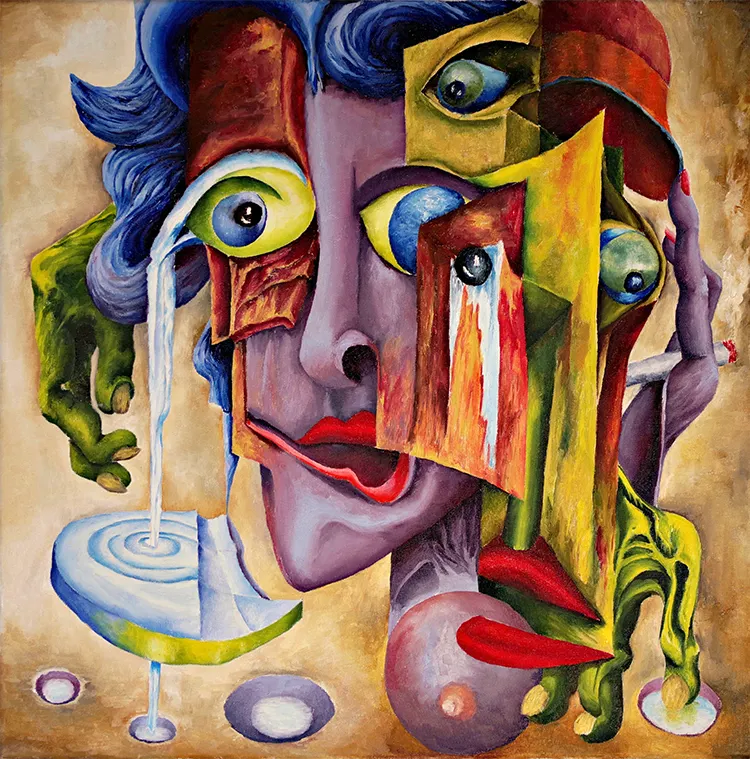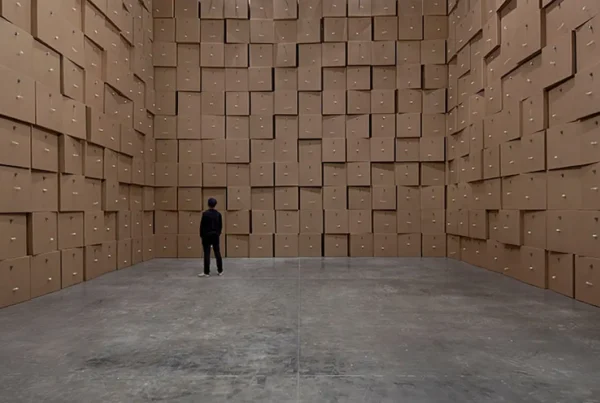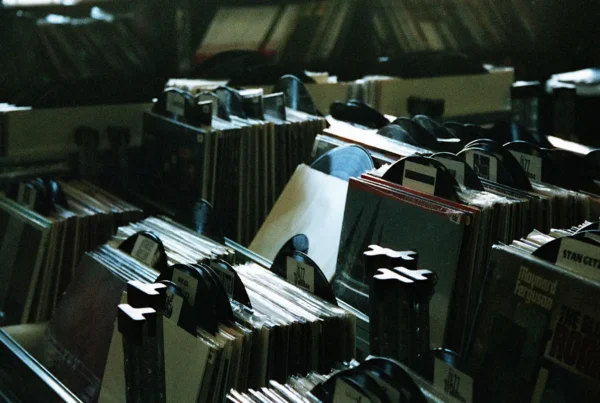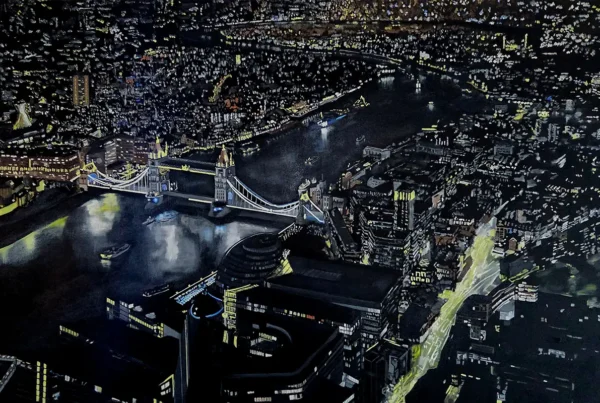“Reality for me is never as I see it, but as I feel it.”
From Blueprints to Brushstrokes: The Architect’s Journey to Art
Janusz Tworek, a Polish architect and multidisciplinary artist, is a creative force rooted in two cultures—his homeland of Poland and the vibrant landscapes of Tenerife. Having graduated in 1980, Tworek’s career began in architecture, a profession that not only shaped his technical precision but also nurtured his artistic instincts. His background as an architect required constant drawing and designing, fostering a deep understanding of spatial relationships. During his student years, photography became a supplementary skill, further refining his ability to capture and interpret reality.
For Tworek, architectural design is a disciplined yet innovative act of translating three-dimensional space into two-dimensional representations. This foundational practice now serves as both an asset and a challenge in his art. While it sharpens his perception of depth and form, it also poses the difficulty of liberating his imagination from spatial constraints. This tension fuels his creative process, allowing his work to oscillate between the structured and the abstract. The transition from designing buildings to creating visual art was not merely a career shift but a personal evolution—a journey from external constructs to the unbounded expression of inner thoughts and emotions.
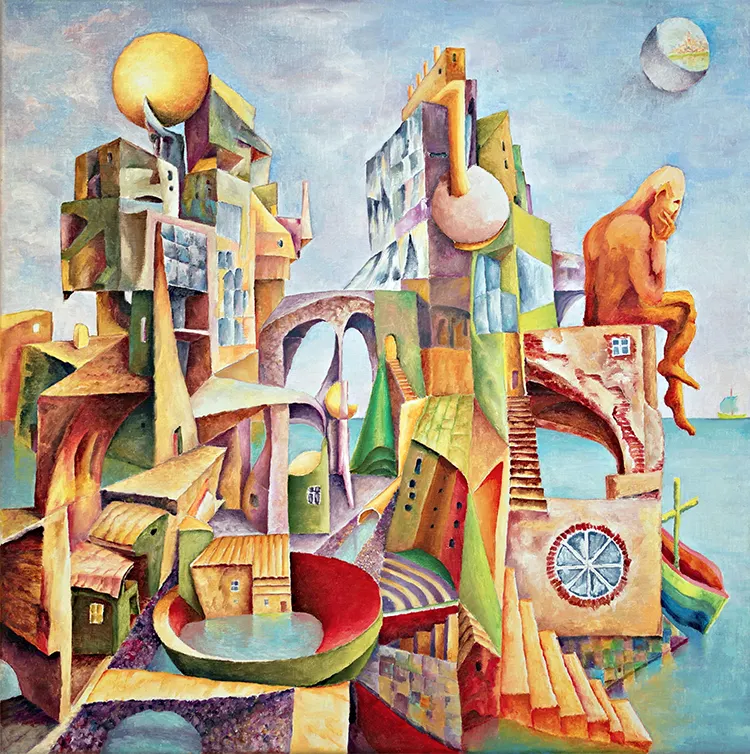
Janusz Tworek: The Architect Who Paints Emotions
Tworek humbly identifies not as a painter, but as an architect who paints, draws, and creates collages. His approach to art stems from a deeply internal need to express his perspectives and emotions, a necessity comparable to breathing for the artist. Without formal training in the arts, Tworek is self-taught, channeling his experiences and thoughts into his work with an authenticity that transcends traditional conventions.
Surrealism resonates deeply with his artistic sensibilities, serving as the style most aligned with his interpretation of reality. However, Tworek eschews strict categorization, embracing any style or technique that captures his emotional state at a given moment. His creative philosophy mirrors the famous words of Pablo Picasso: “I paint objects as I think about them, not as I see them.” This sentiment underscores his belief that reality is defined not by its visible form but by its emotional essence—a perspective that allows him to craft works imbued with profound personal significance.
While Tworek’s creations reflect a vast emotional landscape, they are not tied to specific themes or motifs. His work emerges organically from the stimuli that inspire him in a particular moment. Whether exploring content, technique, or the interplay of the two, his pieces convey a layered complexity that invites viewers to look beyond the surface and engage with the underlying narrative.
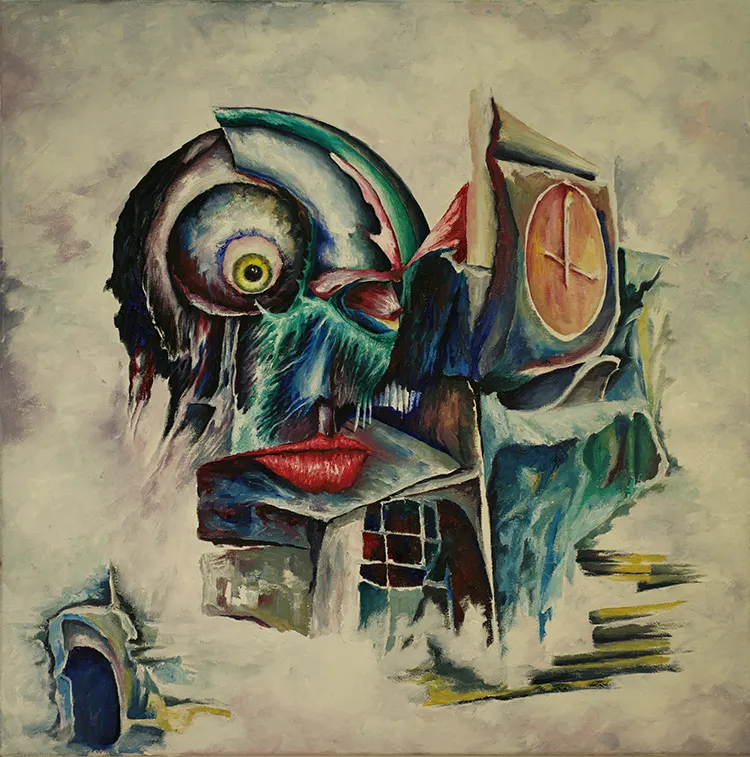
Surreal Soundscapes: The Art of Crafting Creative Environments
For Tworek, the physical space in which he works is as fluid and adaptive as his artistic style. Whether in Tenerife or Krakow, his studios are marked by a creative chaos that he finds energizing rather than disruptive. Unlike the clutter, noise poses a significant challenge to his concentration. Music becomes his sanctuary, providing the rhythm and mood that guide his artistic process. With headphones on, Tworek creates an immersive auditory environment that allows him to connect more deeply with his work.
While he experiments with various media, Tworek has developed a particular affinity for charcoal, dry pastels, and oil paints. These mediums were not deliberate choices but natural extensions of his creative instincts, evolving through years of exploration and practice. Although he has experimented with acrylics, stained glass, ceramics, and other techniques, his preferred materials best capture the emotional intensity of his ideas.
Tworek’s influences are equally varied, rooted in both personal experiences and the works of renowned artists. Reality itself serves as his greatest muse, while iconic figures like Pablo Picasso, Francis Bacon, and Witkacy ignite his imagination. His admiration extends to Polish artists such as Jerzy Duda-Gracz and Janusz Starowieyski, whose works inspire him to explore the boundaries of form and content.
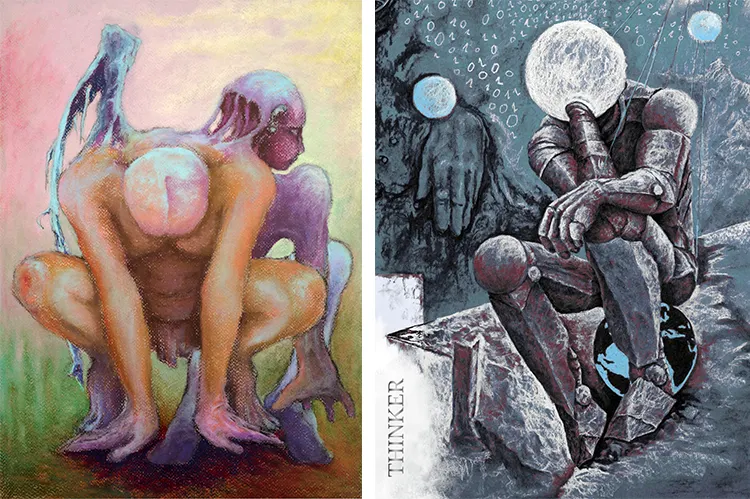
Janusz Tworek: A Legacy of Multifaceted Creativity
Despite his extensive body of work, Tworek resists singling out any specific piece as especially meaningful. His art exists as a continuum, where individual works are distinguished by either their narrative depth or technical mastery. Tworek firmly believes that art should encompass both content and form; pieces devoid of meaning hold little interest for him. This holistic approach ensures that his creations resonate on both an intellectual and emotional level.
His architectural projects, particularly sacred structures, hold a unique place in his creative legacy. These designs reflect his deep respect for the historical and spiritual significance of architecture. As a painter, however, Tworek does not feel bound by a singular vision or project. Instead, his artistic journey is defined by fluidity and an openness to new inspirations.
Tworek’s work is a testament to the seamless interplay between architecture and art, a synthesis of precision and imagination. Through his paintings, collages, and designs, he offers a glimpse into his intricate world—one shaped by his ability to navigate the complexities of reality while giving form to the intangible emotions that lie beneath it.
